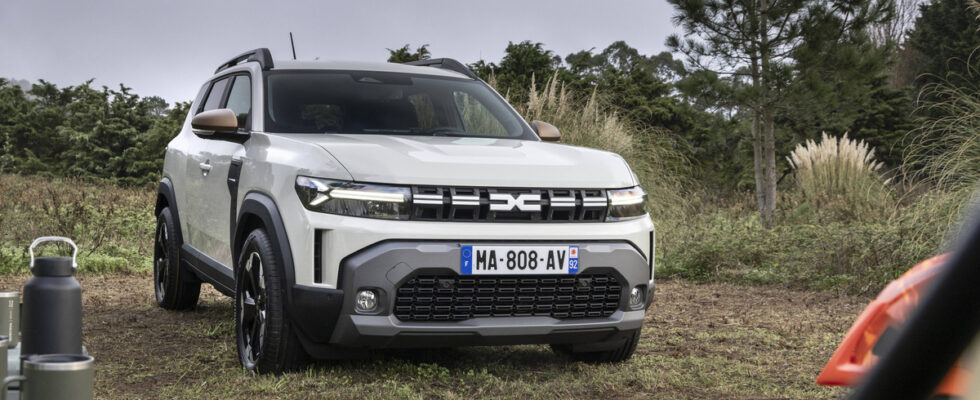Dacia Duster
In the absence of offers discover
The links shown above may not work if an ad blocker is used.
When Dacia arrived in France with the Logan in 2005, its main argument was of course its very low price. With such a positioning, it can be difficult to sell more expensive models and get customers to choose higher-end, more profitable versions. However, Dacia has succeeded and now displays a double-digit operating margin, higher than the majority of general manufacturers.
Dacia owes this success largely to the Duster, the SUV in the range. This real bestseller allowed Dacia to separate itself from the image of low-end cars that stuck to it. From now on, the brand is synonymous with smart, but still attractive, purchasing at a time when the price of cars continues to increase.
© Dacia/Antoine Thomas/Cetadi Prod
For its third generation, Dacia has therefore further strengthened the lines of its Duster, drawing heavily on the Bigster concept. It displays a robust style and abandons the curves of the old model. The front door handles are finally moving to fridge format, while the rear handles are now integrated into the extension of the glazing. Where its main competitors grow generation after generation, the length of the Duster has been almost stable since the first model, today reaching 4.34 m.
© Dacia/Antoine Thomas/Cetadi Prod
Dacia wanted to maintain this impression of robustness inside. While the interior of the previous generation was close to that of the other models, the new Duster stands out more. Impossible to go wrong: we are indeed on board a Duster, whose name is stamped on the dashboard.
© Dacia/Antoine Thomas/Cetadi Prod
The central screen is also finally placed at the top of the dashboard, closer to the driver’s gaze. This panel, supplied as standard from the second trim level (Expression), measures 10.1″ diagonal. It is compatible with Android Auto and Apple CarPlay in wireless versions. The instrumentation benefits from a color screen of 7″ from second trim level.
To convince its customers to spend a little more, Dacia offers a whole series of well-thought-out accessories. In the catalog, we find, for example, YouClip accessories, which allow you to attach storage spaces, a smartphone holder or even an induction charger to various locations in the passenger compartment. The Sleep Pack, seen for the first time on the Jogger, allows you to fit out your Duster with a double bed, for the more adventurous.
© Dacia/Antoine Thomas/Cetadi Prod
The Duster goes hybrid and abandons diesel
The new Duster is based on a much more modern platform. This is the CMF-B, which equips numerous Renault-Nissan-Mitsubishi Alliance models, including the Dacia Sandero and Jogger.
While diesel is falling and the ecological penalty now spares almost no non-hybrid gasoline car, Dacia had to find solutions to electrify its Duster without exploding its purchase price. The brand therefore did what it does best: draw from Renault’s organ bank. Thus, the Duster inherits the 1.2 l TCe 130 block, which replaces the very successful 1.3 TCe. This new engine has nothing to do with the old 1.2 TCe, famous for its reliability concerns. It is a three-cylinder Miller cycle turbo, equipped with 48 V mild hybridization (mHEV).
A version full-hybrid (HEV) of 140 hp also appears. Already seen on the Jogger, this engine comes from the first generation of Renault full-hybrid. Finally, if the Duster abandons diesel, it remains offered at entry level with the three-cylinder turbo ECO-G 100, with dual-fuel gasoline and LPG.
Likewise, despite the arrival of the CMF-B platform, Dacia continues to offer a 4×4 version. It is equipped with the TCe 130 engine and associated with a six-speed manual gearbox, the first gear of which has been shortened compared to the 4×2 version. Only the Duster Hybrid 140 is equipped with an automatic transmission.
We will still have to wait before knowing the exact prices of the new Duster, as well as its CO2 emissions, which will dictate the penalty for each version. Dacia, however, announces a starting price below €20,000. The third generation Duster should arrive in dealerships in June 2024. Note that Dacia plans to launch an SUV larger than the Duster in 2025, highly anticipated by customers.
